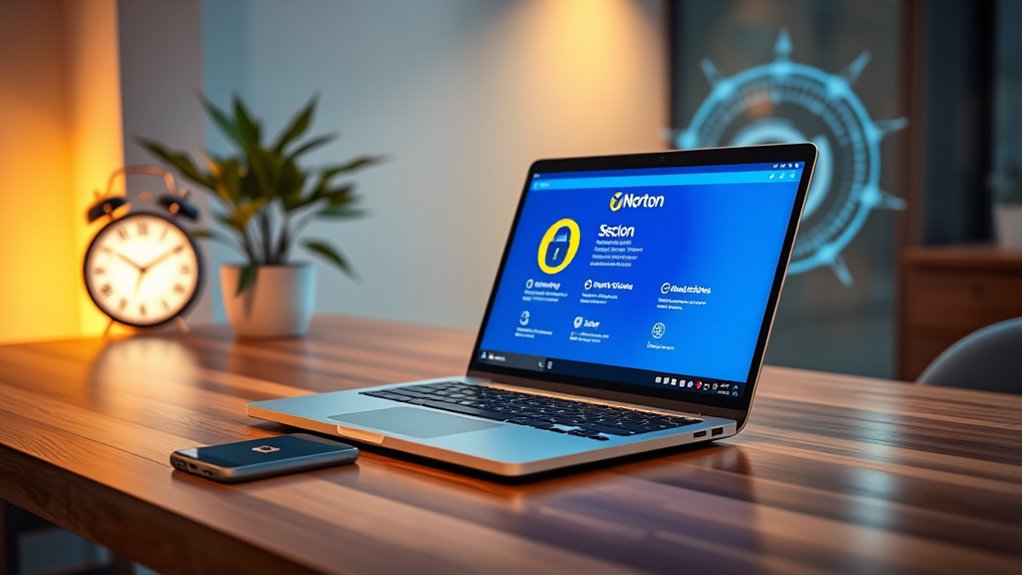As of now, the fastest recorded internet speed stands at 402 Terabits per second, achieved by Japan’s National Institute of Information and Communications Technology. This remarkable feat was accomplished using commercially available optical fiber technology, greatly surpassing the previous record of 319 Terabits per second set in 2021. Such advancements highlight the profound capabilities of fiber optic systems, showcasing the potential for future developments in internet connectivity. Further exploration reveals the extensive implications of this technology.

In the quest for unparalleled connectivity, the fastest internet speed recorded globally stands at an astonishing 402 Terabits per second (Tbps). Achieved by Japan’s National Institute of Information and Communications Technology through commercially available optical fiber technology, this speed eclipses traditional internet capabilities. To put this in perspective, domestic internet speeds are typically measured in megabits per second (Mbps), making the leap from Tbps to Mbps seem extraordinary.
As of 2025, the global median download and upload speeds for fixed broadband are around 97.61 Mbps and 52.84 Mbps, respectively. This highlights a significant disparity between the highest recorded speeds and average consumer experiences. Remarkably, Singapore leads the pack in fixed broadband performance with a median speed of 336.45 Mbps. The United Arab Emirates and Hong Kong closely follow, recording median speeds of 310.05 Mbps and 305.71 Mbps, respectively. The speed measured in January 2024 was 91.93 Mbps, which underscores the rapid growth in global internet performance. Additionally, the fastest internet speed achieved in 2021 was previously 319 Tbps, reflecting the rapid advancements in technology.
France and Iceland likewise rank favorably in the top five with speeds of 287.44 Mbps and 281.95 Mbps, placing the United States seventh globally with a median of 274.16 Mbps.
In terms of mobile internet, the UAE surpasses all others with remarkable speeds reaching 545.94 Mbps, reflecting a broader trend of increasing mobile connectivity. With a global median for mobile internet presently at approximately 91.24 Mbps, the rise in speeds suggests significant advancements in network technology, including improved fiber optic infrastructure.
Fiber optic networks, particularly Fibre to the Premises (FTTP), facilitate higher speeds and greater reliability compared to traditional methods like copper or DSL. The development of optical fiber has set several world records, evidencing future potential.
Yet, in spite of these advancements, economic and geographic disparities persist, impacting accessibility and performance for consumers globally. As technology continues to evolve, the environment of internet connectivity is poised for further transformation, continuously narrowing the gap between the fastest recorded speeds and everyday usage.
Frequently Asked Questions
How Can I Test My Own Internet Speed?
To test one’s internet speed, individuals can utilize online tools such as Ookla Speedtest. This platform measures both download and upload speeds, providing essential data about latency.
Users initiate a test by clicking a button, after which the service displays results in megabits per second (Mbps). Validating actual speeds against ISP promises guarantees users receive appropriate service levels.
Regular testing can additionally help determine patterns in internet performance and identify operational issues.
What Factors Affect Internet Speed Performance?
Multiple factors greatly influence internet speed performance.
Hardware specifications, such as processor type and RAM capacity, are essential; outdated devices can hinder connection quality.
Network conditions, particularly congestion during peak hours, directly affect speed.
Furthermore, infrastructural elements, including server optimization and router configuration, play crucial roles.
External elements, including physical barriers and environmental conditions, further complicate connectivity.
Collectively, these factors determine the overall internet experience, necessitating thorough evaluation for optimization.
Is Faster Internet Always Better for Everyone?
Faster internet is not universally better for all users. Although it improves productivity and allows seamless connections, many individuals do not require such speeds for basic tasks like browsing.
A 2022 study indicated that 60% of users find speeds above 50 Mbps unnecessary for daily activities. Additionally, exorbitant costs associated with high-speed infrastructure may create accessibility issues.
Expert analysts suggest balancing investment in internet speed with addressing fundamental services like healthcare and education.
How Do Internet Speeds Vary by Country?
Internet speeds exhibit significant variation by country, influenced by factors such as infrastructure and investment.
For instance, Singapore boasts the highest fixed broadband speed at 336.45 Mbps, whereas the United States ranks seventh with 274.16 Mbps. Conversely, some nations, like Syria and Cuba, experience speeds below 10 Mbps.
Mobile internet speeds furthermore vary, with the United Arab Emirates leading at 545.94 Mbps, emphasizing disparities in technological advancement across different regions.
What Equipment Do I Need for High-Speed Internet?
To achieve high-speed internet, specific equipment is crucial. Fiber-optic cables facilitate the fastest connections, potentially exceeding 10 Gbps. A Fiber to the Premises (FTTP) setup is recommended for ideal performance.
Furthermore, gigabit routers are necessary to manage speeds of 1 Gbps or higher. For stable connections, Ethernet cables are preferable over Wi-Fi.
Devices such as Wi-Fi 6 routers improve efficiency, supporting multiple devices as they ensure reliability in data transmission.









